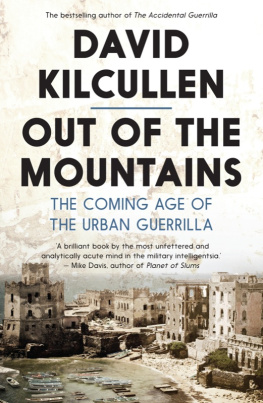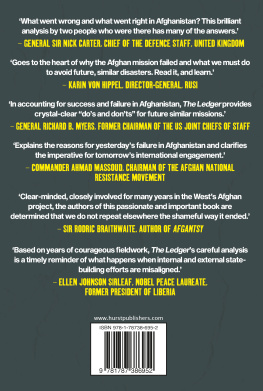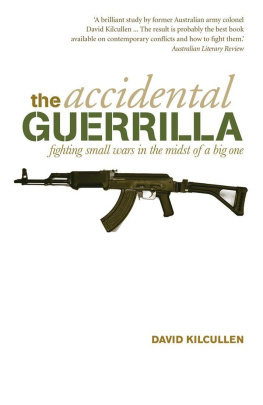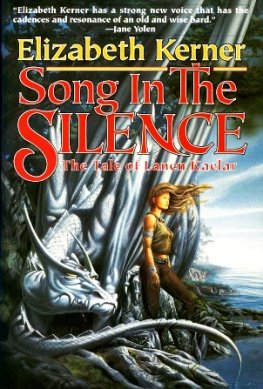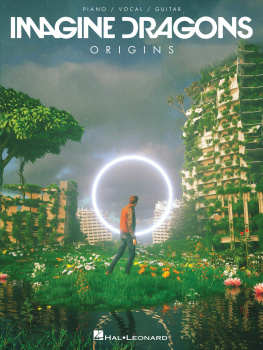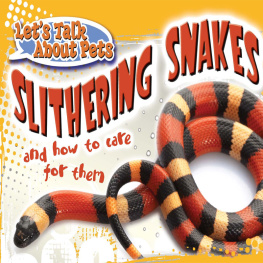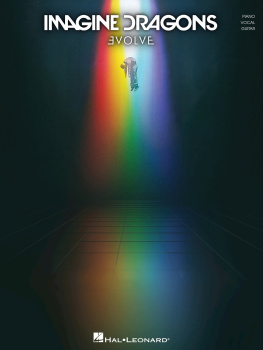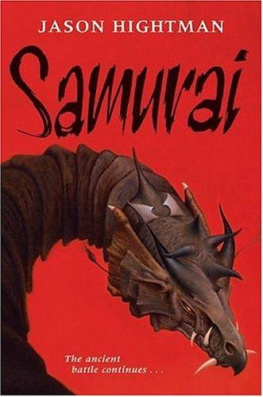David Kilcullen - The Dragons and the Snakes: How the West Learned to Fight the Rest
Here you can read online David Kilcullen - The Dragons and the Snakes: How the West Learned to Fight the Rest full text of the book (entire story) in english for free. Download pdf and epub, get meaning, cover and reviews about this ebook. year: 2020, publisher: Oxford University Press, genre: Politics. Description of the work, (preface) as well as reviews are available. Best literature library LitArk.com created for fans of good reading and offers a wide selection of genres:
Romance novel
Science fiction
Adventure
Detective
Science
History
Home and family
Prose
Art
Politics
Computer
Non-fiction
Religion
Business
Children
Humor
Choose a favorite category and find really read worthwhile books. Enjoy immersion in the world of imagination, feel the emotions of the characters or learn something new for yourself, make an fascinating discovery.
- Book:The Dragons and the Snakes: How the West Learned to Fight the Rest
- Author:
- Publisher:Oxford University Press
- Genre:
- Year:2020
- Rating:5 / 5
- Favourites:Add to favourites
- Your mark:
- 100
- 1
- 2
- 3
- 4
- 5
The Dragons and the Snakes: How the West Learned to Fight the Rest: summary, description and annotation
We offer to read an annotation, description, summary or preface (depends on what the author of the book "The Dragons and the Snakes: How the West Learned to Fight the Rest" wrote himself). If you haven't found the necessary information about the book — write in the comments, we will try to find it.
The Dragons and the Snakes: How the West Learned to Fight the Rest — read online for free the complete book (whole text) full work
Below is the text of the book, divided by pages. System saving the place of the last page read, allows you to conveniently read the book "The Dragons and the Snakes: How the West Learned to Fight the Rest" online for free, without having to search again every time where you left off. Put a bookmark, and you can go to the page where you finished reading at any time.
Font size:
Interval:
Bookmark:


Oxford University Press is a department of the University of Oxford. It furthers the Universitys objective of excellence in research, scholarship, and education by publishing worldwide. Oxford is a registered trade mark of Oxford University Press in the UK and certain other countries.
Published in the United States of America by Oxford University Press
198 Madison Avenue, New York, NY 10016, United States of America.
David Kilcullen 2020
All rights reserved. No part of this publication may be reproduced, stored in a retrieval system, or transmitted, in any form or by any means, without the prior permission in writing of Oxford University Press, or as expressly permitted by law, by license, or under terms agreed with the appropriate reproduction rights organization. Inquiries concerning reproduction outside the scope of the above should be sent to the Rights Department, Oxford University Press, at the address above.
You must not circulate this work in any other form and you must impose this same condition on any acquirer.
CIP data is on file at the Library of Congress
ISBN 9780190265687
eISBN 9780190265700
It was mid-2012, as I was wrapping up Out of the Mountains, the book on future urban conflict that I finished later that year, when I began seriously researching the issues that underpin this bookthe return of great-power military confrontation, the convergence of state and nonstate adversaries on remarkably similar operating methods despite their radically different points of origin, and the notion that something in the environment created by Western military dominance since the Cold War might be driving that convergent evolution.
Already clear was the growing influence (and increasingly sophisticated methodology) of competitive or actively hostile nation-states that were exploiting our exclusive focus on terrorism, seeking to fill the geopolitical, economic, and security vacuum we had left as we became bogged down in the wars of occupation in Iraq and Afghanistan.
The signs were everywhere if one cared to look: the Chinese-constructed container terminal on Colombias Pacific coast, as well as Chinese military advisers and hardware appearing across Africa and in Sri Lankas fight against the Tamil Tigers; the Russian air cargo companies dominating licit and illicit transport operations in the Horn of Africa; Russian private military contractors appearing in Syria to support Bashar al-Assads regime; Russias decision to reopen its signals intelligence station at Lourdes, Cuba, directly targeting the United States; the Iranian and North Korean advisers and military operators in Venezuela; the competition for influence among Turkey, Saudi Arabia, and Iran (and their Gulf allies) in the Horn of Africa and across North Africaall of these were signs that, as we had doubled down on the costly fight against terrorism, other risks and competitors were growing apace.
To be sure, the signs were not as clear in 2012 as they are now. Chinas first aircraft carrier, the Liaoning, had yet to put to sea, and Beijings island-building efforts across the collection of rocks, shoals, and atolls that it claims in the disputed South China Sea were just beginning, while the Chinese garrisons, radar jammers, anti-aircraft systems, and anti-ship missiles that now dot the area had still not yet been deployed. Russia had invaded and occupied Georgian territory, launched cyberattacks against Estonia, and promoted a frozen conflict between Azerbaijan and Armenia. But the seizure of Crimea and Moscows barely covert invasion of Ukraine were still in the future, as was the shooting down of Malaysian Airlines Flight MH17 by a Russian anti-aircraft missile and Russias return as a key player in the Middle East via its overt military intervention in Syria.
Iran had yet to expand its footprint in Syria and Yemen, its operations in Iraq remained clandestine though dangerous, and its nuclear program (suspended in 2003) was the subject of ongoing, secret negotiations with the Obama administration in the lead-up to the Joint Comprehensive Plan of Action, the Iranian nuclear deal, which became public in 2015. North Koreas new leader, Kim Jong-un, had yet to show his ruthless mettle, being regarded by many observers as young, callow, and likely to remain under the thumb of powerful generals and older relatives (many of whom he later killed). And while the Arab Spring was in full retreat by mid-2012, the Benghazi attack had yet to hammer home the failure of the Libya intervention. And the rise of Islamic State was still a niche concern for Iraq watchers who struggled to gain attention or traction from a US administration that considered the Iraq War done and dusted the moment we withdrew, as if leaving the conflict equated to ending it.
By early 2013, I was researching and writing, conceptualizing the new strategic environment through the lens of James Woolseys testimony exactly two decades earlier, in 1993, in which he had talked of the West slaying a large dragon (the Soviet Union) only to find itself facing a bewildering variety of snakes in the postCold War environment. By the end of 2013particularly after Moscows diplomatic victory in resolving the crisis created by the Eastern Ghouta nerve agent attack in Syria and Washingtons failure to enforce its own redline over Assads use of chemical weaponsit seemed clear that the dragon, in the form of Putins Russia, was back. We were dealing with both state and nonstate adversaries, at the same time and in many of the same places.
But it seemed equally clear that, in the intervening twenty years, the dragons (including China) had been watching and learning, figuring out how to fight like the snakes that had so bedeviled us since the Cold War, and particularly since 2003. While keeping a wary eye on Iraq, and as our field teams continued to support humanitarian and stability efforts in Syria and Afghanistan, my research team and I were increasingly focused on developments in Russian and Chinese asymmetric and unconventional warfare, which appeared as capable adjuncts to these countries military modernization and expansive political and economic programs. But then all of us were forced into a massive detour.
The breakout of Islamic State across Iraq and Syria in the spring and summer of 2014 was not just a huge setback for the United States and western countries seeking to stabilize Iraq. Nor was it merely a massive embarrassment for a US president who had described ISIS as a junior varsity team just months earlier and talked of the receding tide of war only days before ISIS tanks captured Iraqs second-largest city, Mosul, in June 2014. It also showed thatjust as the dragons had been learning from the snakes over the past decade or morenonstate actors were copying state techniques and deploying levels of technology and lethality previously restricted to governments.
My book Blood Year (published in 2016) chronicled the rise of ISIS, but it came out too early to track the groups eventual, albeit partial demise in 201718, as its core pseudo-state caliphate in Iraq and Syria lost control of the territory and population it had seized in its initial wave of success, eventually to be extinguished as a territorial entity in March 2019. Its worldwide international network survivedand continues to inspire and direct attackswhile a dozen ISIS-aligned groups (provinces, wilayat) remain active from Afghanistan to Nigeria and from Libya to the Philippines. But even as I traveled across the region, spoke with numerous sources from Iraq, Syria, and North Africa, and finished
Font size:
Interval:
Bookmark:
Similar books «The Dragons and the Snakes: How the West Learned to Fight the Rest»
Look at similar books to The Dragons and the Snakes: How the West Learned to Fight the Rest. We have selected literature similar in name and meaning in the hope of providing readers with more options to find new, interesting, not yet read works.
Discussion, reviews of the book The Dragons and the Snakes: How the West Learned to Fight the Rest and just readers' own opinions. Leave your comments, write what you think about the work, its meaning or the main characters. Specify what exactly you liked and what you didn't like, and why you think so.


